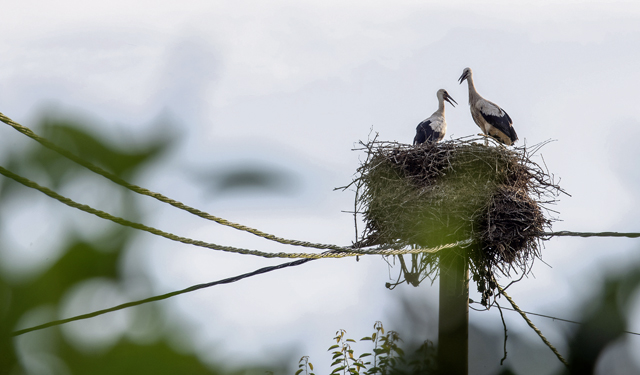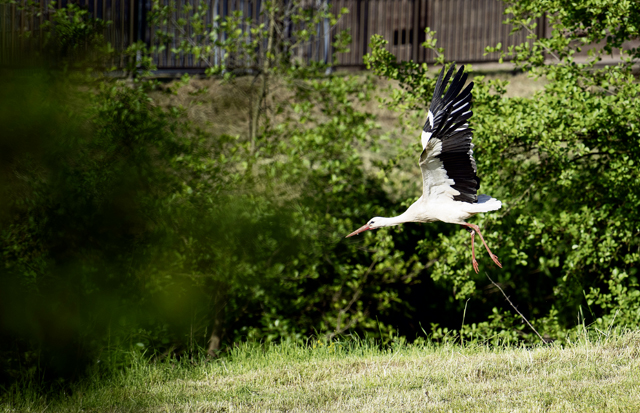
Germany is home to a rich tapestry of wildlife, but few creatures capture the public’s imagination like the stork. These majestic birds, with their long legs and striking white and black plumage, have a special place in German culture and natural history.
The primary stork species found in Germany is the White Stork. These birds are migratory, spending their winters in Africa and returning to Europe in the spring to breed. They are most often seen in the northern and eastern parts of Germany, with notable populations in Brandenburg, Mecklenburg-Western Pomerania, and Saxony-Anhalt. These areas offer the wetlands, meadows, and agricultural landscapes that storks prefer for nesting and feeding.
White storks are known for their large nests, which are built in elevated locations such as rooftops, chimneys, and specially constructed platforms. These nests are often reused and added to each year, becoming substantial structures over time. Storks typically lay three to five eggs per clutch, with both parents sharing the responsibilities of incubating the eggs and feeding the chicks.
Stork nests are significant not only for their size, but also for their location — often becoming local landmarks. A stork nest on a building is traditionally seen as a good omen, symbolizing prosperity and fertility.
One of the most remarkable aspects of the stork’s life cycle is its long-distance migration. German storks embark on an epic journey to their wintering grounds in Africa, traveling thousands of kilometers each autumn. They typically follow one of two main routes: the western route through Spain and Morocco or the eastern route via the Bosporus in Turkey.
Migration is risky, with storks facing numerous threats along the way, including hunting, habitat loss, and collisions with power lines. However, conservation efforts in Germany and across Europe are helping to mitigate some of these risks, supporting stork populations on their migratory paths.
The White Stork population in Germany has fluctuated over the years due to various factors, including agricultural practices and habitat availability changes. In the mid-20th century stork numbers declined sharply, prompting conservationists to act. Efforts to protect wetlands, create artificial nesting sites, and promote sustainable agriculture have contributed to a gradual recovery of stork populations in recent decades.
Organizations like the Nature and Biodiversity Conservation Union (NABU) are vital in monitoring stork populations, advocating for their protection, and engaging the public in conservation activities. Programs such as the “Stork Route” in Brandenburg, a tourist trail highlighting prime stork-watching locations, help raise awareness and support for these birds.
Storks hold a special place in German folklore and tradition. They are often associated with good fortune, new beginnings, and family life. The legend that storks deliver babies is widespread in European folklore, including Germany. This charming myth likely originated from the storks’ tendency to nest on rooftops, symbolizing the arrival of new life.
Festivals and events celebrating the stork are typical in regions where the birds are prevalent. For example, the village of Rühstädt in Brandenburg, known as the “Stork Village,” hosts annual festivities that draw visitors eager to see these magnificent birds up close.
The storks of Germany are more than just a wildlife species; they are a symbol of natural beauty, cultural heritage, and successful conservation. Their annual return each spring reminds us of the changing seasons and the enduring bond between humans and nature. Through continued efforts to protect their habitats and raise awareness, Germany can ensure these iconic birds continue to grace its landscapes for generations to come.



